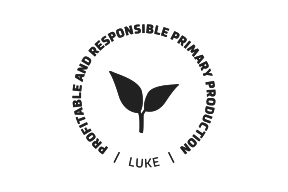Industry 4.0 for More Sustainable Forest-based Value Chains
The 4th Industrial Revolution shapes the forest industry along with other industries. The biggest obstacles to adoption are cultural barriers and the lack of technical skills.
The 4th Industrial Revolution (4IR) denotes the current era of connectivity, advanced analytics, automation, and cutting-edge manufacturing technology. This transformative wave has been reshaping global business for years and is the cornerstone of the ongoing global digital transformation the forest sector embraces. 4IR builds on the inventions of the Third Industrial Revolution – or digital revolution – which unfolded from the 1950s to the early 2000s and brought us more powerful computers, a range of electronic devices, the Internet, and much more. 4IR brings these technologies beyond four foundational types of disruptive technologies, which can be applied all along forest-based value chains:
- Connectivity, data, and computational power: cloud technology, the Internet, blockchain, sensors
- Data analytics and intelligence: advanced data analytics, machine learning (ML), artificial intelligence (AI), deep learning (DL)
- Human-machine interaction: virtual reality (VR) and augmented reality (AR), robotics and automation, autonomous guided vehicles
- Advanced engineering: additive manufacturing (e.g., 3-D printing), renewable energy, nanoparticles.

Data is the key
An essential aspect of the 4IR technologies is their capacity to enhance decision-making through advanced data analytics. Forestry organizations and businesses depend on data collection and analysis to gain a competitive edge. Yet, despite the unprecedented data collection and utilization potential, many organizations struggle to fully harness the data accrued from their business and operational activities. Leveraging data analytics capabilities within forest organizations necessitates comprehension of the available methods, including their purpose and scope. Harnessing the power of data analytics for forest organizations requires a clear understanding of the purpose and scope of the methods available.
At least four types of data analytics exist: 1. Descriptive analytics (what happened?), 2. Diagnostic analytics (why did it happen?), 3. Predictive analytics (what will happen?), 4. Prescriptive analytics (what should we do to get the best result?). The latter is the most complex to develop and implement, but it provides more value for the organizations. Prescriptive analytics is at the cutting edge of data science and is often called 'the final frontier' of business analytics. It underpins decision support and automation with less human intervention (more agile operations), facilitated by ML and AI tools and algorithms.
Over the past decade, forestry organizations and entrepreneurs have been driven to adopt several 4IR technologies due to a few key reasons:
- To address labor issues and increase safety (social aspect)
- To boost productivity and reduce costs (economic aspect)
- To mitigate the impact on flora, fauna, water courses, and soil (environmental aspect)
- To get immediate access to digital data for informed decision-making (competitive aspect)
- To promote resilience and sustainability throughout business and supply chains (sustainability aspect)
Overcoming cultural barriers to 4IR adoption
Despite significant advancements in the realm of 4IR, numerous organizations, especially small businesses and machine entrepreneurs, continue to grapple with adopting 4IR technologies. A recent study by Forbes has identified the top five hurdles that impede the widespread adoption of 4IR technologies, including initial investment, cultural barriers, fear, shortage of talent, and lack of strategic approach. Likewise, Gartner has pinpointed the inadequacy of staff skills as a paramount barrier to the successful implementation of artificial intelligence (AI), closely followed by a limited comprehension of AI's advantages, applications, and the scope and quality of data.
Intriguingly, most of these obstacles are not tied to the intricacy of technological solutions but rather to cultural impediments and the deficit of technical expertise. These identical challenges thwart the integration of 4IR within the forestry sector, underscoring the urgent need for pioneering educational forestry programs that incorporate 4IR-related courses into their curriculum.
Although some forest companies continue to face persistent challenges, many have already laid out clear roadmaps and strategies for successfully adopting 4IR technologies. The scientific literature and media abound with a diverse range of innovative solutions driven by 4IR technologies. Notable examples of wood supply chain innovation include AI-based tools for optimizing wood supply chains, simulations, and advanced analytics. Harvesting operators are being aided by sensor data and AI-driven optimization systems, while remotely controlled harvesting machines and autonomous guided harvesters and forwarders are transforming the industry.
Other advancements include truck platooning, the application of virtual and augmented reality for training purposes, blockchain for wood traceability, automated volumetric measurement of truckloads and log piles, and the automated detection and characterization of trees from point cloud data collected with Lidar sensors.
The way forward with 4IR
Finally, these are some suggestions for forestry entrepreneurs and small organizations that are planning on the 4IR journey:
- Consider how Industry 4.0 technologies can enhance your business; establish a clear objective and roadmap (strategic approach).
- Prepare your company and personnel for adopting 4IR technologies (identify and address potential barriers to adoption).
- You cannot manage what you don’t measure, so begin by collecting data, as effective management starts with measurement.
- Leverage machine data to its fullest potential by utilizing data analytics and machine learning to identify inefficiencies, bottlenecks, and utilization patterns.
- Enhance decision-making for sustainable and competitive forest operations, encompassing economic, environmental, and social aspects.
- Champion a culture of continuous improvement within your company.
- Cultivate collaborations with fellow entrepreneurs, technology firms, machinery manufacturers, universities, and research institutions (e.g., Luke) to stay at the forefront of 4IR advancements.


